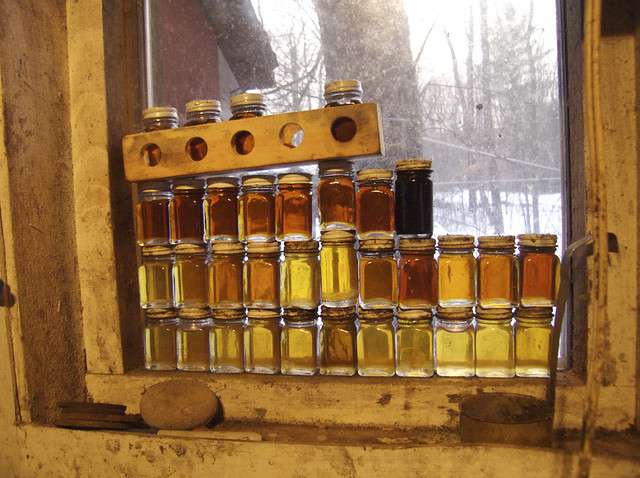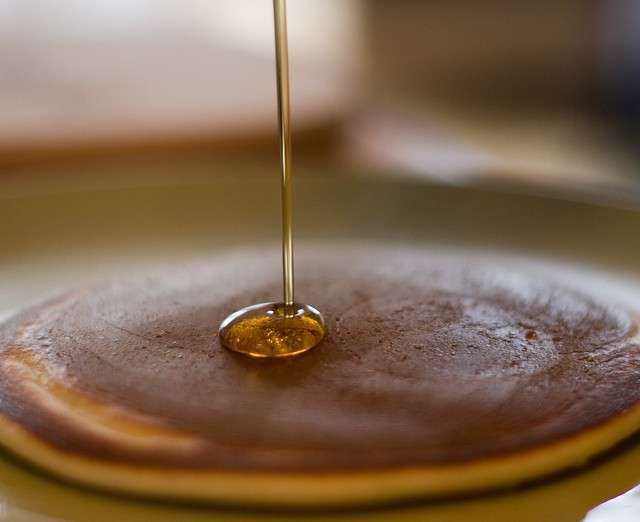
Maple syrups can vary in color from batch to batch. Maintaining color quality and consistency is crucial for improving marketability in this competitive industry. Image Source: Flickr user David Black
Maple syrup is a hot commodity in our household…my kids seem to put in on nearly everything. That is why our pantry is stocked with a warehouse-sized container to ensure we never run out. However, not all maple syrups are created equal. Unfortunately, we learned this the hard way when one morning my family woke up to piping hot stack of pancakes only to realize that our syrup supply had been depleted. After a desperate plea, my husband ran to the store only to return with a smaller bottle of the same name brand we preferred; yet it had the appearance and consistency of dirty water. My children refused to eat it saying it “just didn’t look right”.
I know that they say you can’t judge a book by its cover, but research shows that taste perception and visual appearance go hand in hand.1 In fact, color appearance is the first thing consumers use when choosing a product, so maybe there is more truth to the old adage of “love at first sight”. Truth be told, the less appealing muddy water looking concoction from the smaller store bought bottle really didn’t taste that different, but many consumers pass on foods and beverages simply because they “don’t look right”.
Visual preference is actually an internal warning system our body and minds use to protect us from harmful foods, so it is no wonder our purchasing choices are so dependent on visual appeal. That is why manufacturers invest so much time and energy to ensure that colors stay consistent throughout production and from batch to batch. Of course, food products vary greatly in appearance and require different methods for accurate color analysis.

New maple color grading regulations require instrumental analysis for color quality monitoring. Image Source: Flickr user Dany Johnson



